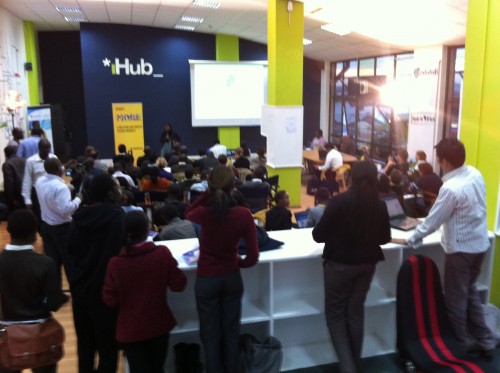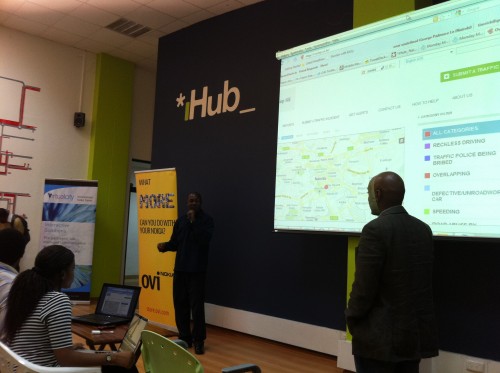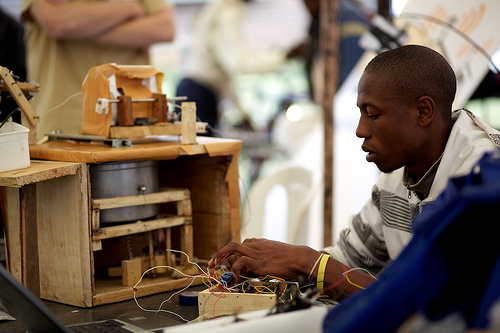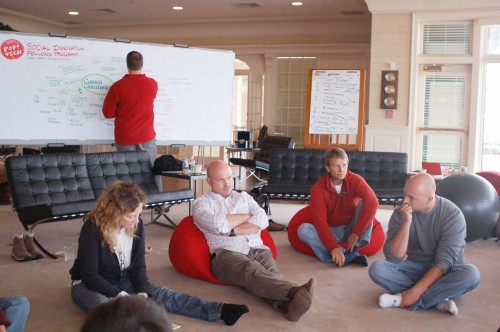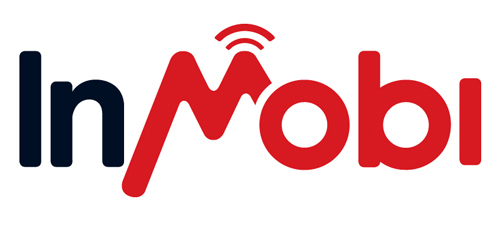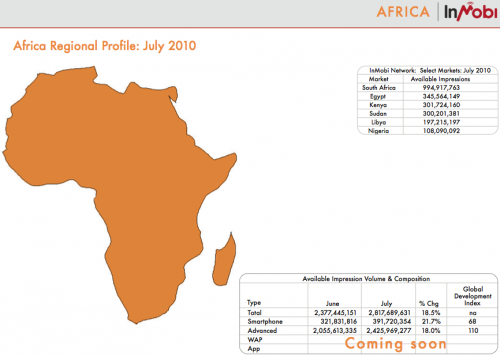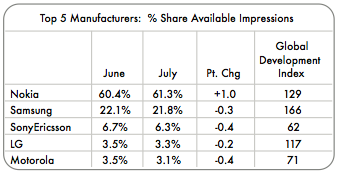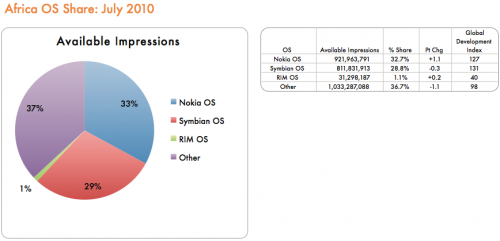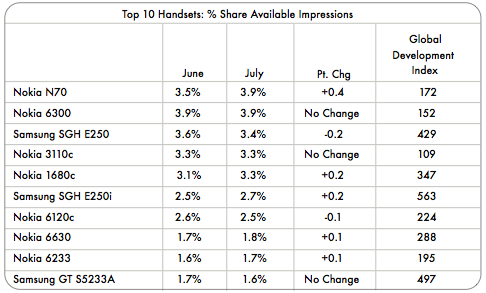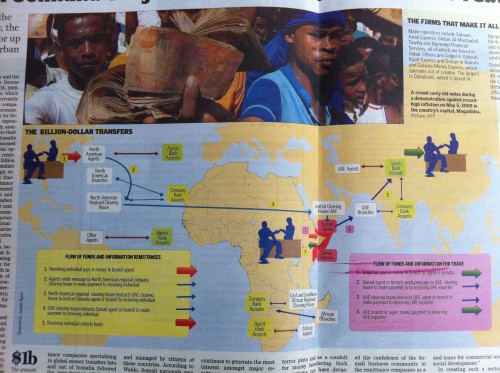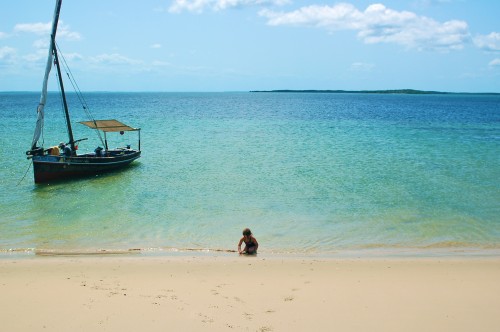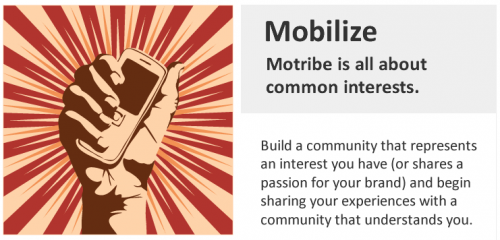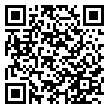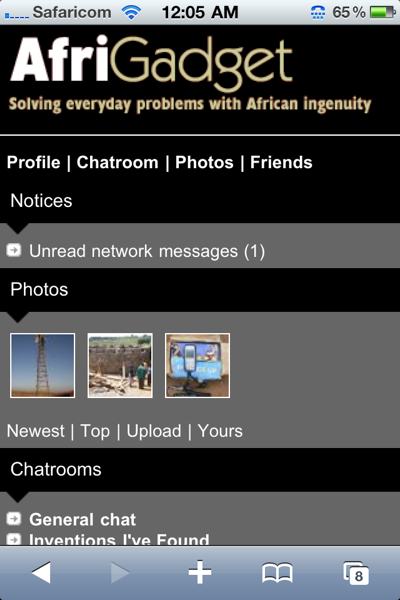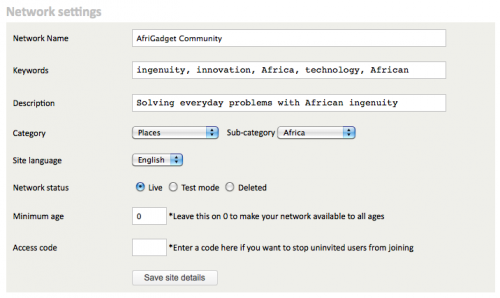The only time I’ve ever seen an event have more people at the iHub is at the grand opening back in March, and Barcamp Nairobi over the summer. Today is Mobile Monday, an event that happens at the iHub about once per month, run by John Wesonga. It’s quickly becoming a big event to be at.
M-Farm
“Great ideas are always born on a tissue paper”
Jamila talks about the genesis of their idea, M-Farm: To bring farmers together to buy and sell together.
IPO48 put together a competition for Kenyan techpreneurs to pitch their ideas – the Akirachix won the 1,000,000 Ksh prize with the M-Farm idea.
How does it work?
Prices are found by information collection through crowdsourcing of that information from the farmers and by having people go out and find out the prices from the sellers as well, in locations all over Kenya.
Their goal is to give the farmer more information, through reports, to help the farmer make an informed decision on what to grow next. It’s a mixture of historical sales, predicted weather, and other information that would help them make a better decision. M-Farm works with the farmers cooperatives as well.
The unique thing about M-farm is the socialization of the farmers. It’s not just about information, it’s about the community.
Overlap
Limo Taboi and Kahenya are giving a presentation on overlapping, the term used by Kenyans when guys go into the wrong side of the road to pass others and cause a massive traction jam. Their new website is Overlap.co.ke.
“We have bad driving habits in Kenya.”
We’re trying to find a way for ordinary Kenyans to track eachother’s bad driving using the Ushahidi platform. This is everything from buses and matatus with no lights, to overlapping and reckless driving.
Right now it’s a citizen effort, but they’re hoping that one day the police will take note as well.
You can report in by submitting something to the website, by email in a report to overlap.kenya@gmail.com or using the #OverlapKE hashtag on Twitter.
Nokia Infrastructure Support
Nokia is a sponsor of tonight’s Mobile Monday. Agatha Gikunda is here to talk about the way Nokia is doing things in East and Southern Africa to engage with developers. They’re really trying to reach out to small businesses and developers to build more apps and services with Nokia software and for their handsets. Most of all, they want to help with the marketing of your new product, using the Nokia marketing infrastructure through partnerships.
One example of what they’re doing took place last week. They trained 25 developers in QT and Advanced Java at the University of Nairobi. 10 universities and key training institutions were engaged and participated in the training.
Another way they’re working with local developers and entrepreneurs is helping local app developers to market their product. Their example here is AfroHotorNot, an app that they go around and market at universities. Beyond local marketing, they also help you publish your work globally and make money off of your apps.
Other partners that Nokia has helped market globally, beyond Kenya are Sharper Innovations (LSU, Afrohotornot and Wazzup), Symbiotic Media (Tusker Project Fame and Daily Nation Media) and Shimba Technologies (Tuvitu App and MTV Music Awards app).
To get paid, Nokia takes 30% and pays out 70% to the developer. You have to have a local bank account to get paid directly, and the money is released once you reach around 100 Euros. There isn’t a really good way to get paid in Kenya, but they’re trying to get a deal with local mobile operators for operator billing to happen.
About 30 apps have been created by Kenyan devs for the Ovi Store. About 99% of those are local focused, only 3 are focused on the global market.
Agatha was asked about when they’ll have local billing integration. The answer is that they’re trying but they don’t know when it’ll happen.
To get started with the Nokia Ovi Store, go to publish.Ovi.com.
Safaricom and Innovation
“I tell my colleagues that you need to get off that ivory tower and start sitting with everyone. See what ticks.”
– Nzioki Waita, Head of Strategy and New Business at Safaricom
ICT is going to make the next 500k jobs in Kenya, and Safaricom plans to be on the forefront of that. He goes on to talk about how Safaricom is trying to be more friendly to smaller organizations and entrepreneurs in the country. You used to be able to predict with some certainty the types of value added services that would work. Now, enter the smartphone and data connections, and your phone is now a vehicle to a new destination. Life became more complex to us.
We now get people walking into our office saying “I have an idea, it will make money for both of us.” The people they were coming to talk to weren’t set up to take on these kinds of ideas. This made them form a “new products” division where Mpesa and the VAS team’s are seated.
They’ve moved away from the stages where you’d walk in with an idea and then you’d never hear from Safaricom again. Now they have to deal with the ideas, and they’re trying to understand a better way to do that (see my post on the Safaricom Innovation Board). They’re trying to figure out how to channel it.
What Safaricom is doing:
- SDP (Service Delivery Platform) plus and App store launching at the same time.
- Safaricom Academy (with Strathmore Univ). A way to get young innovators working on their ideas with training.
- Incubation Centre. A small space within Safaricom to incubate ideas on their infrastructure
- The Safaricom Innovation Board – A group who helps set policy and buffers devs from Safaricom and vice versa.
- The Safaricom Garage – a place for devs to come and work on a portion of the Safaricom network (location based services, billing, etc.)
Nzioki won’t discuss revenue share, unfortunately. Too bad, they need to be a lot more open about the money side of this equation, otherwise it will be perceived as the same old Safaricom.
John Waibochi of Virtual City
Virtual City is also a sponsor for the Mobile Monday event, and John Waibochi, the CEO is here. Virtual City recently won the $1m Nokia Growth Economy Venture Challenge about 3 months ago.
